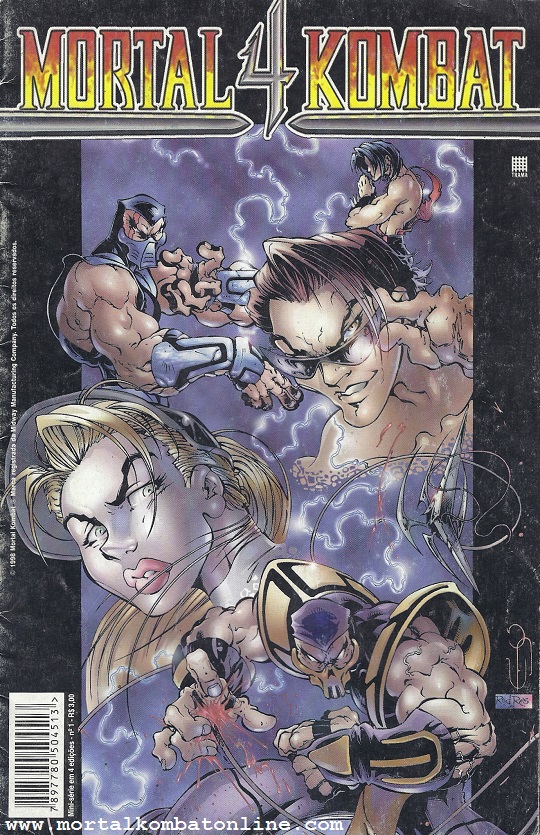 When you consider the importance of comic books to the history of Mortal Kombat -- it's a wonder there haven't been more of them!
When you consider the importance of comic books to the history of Mortal Kombat -- it's a wonder there haven't been more of them!
Beginning in 1994; now defunct publisher Malibu Comics served a catalogue of interconnecting mini-series inspired by the hit games. Since then, the pickings have been slim. There have been official comic book tie-ins related to key game releases, but even a crossover with DC Comics -- and subsequent acquisition by DC parent company: Warner Brothers -- has failed to turn up any significant progress.
The success of Injustice: Gods Among Us and its comic book tie-in has led to a flood of requests for Kombat comics. News of an impending new Mortal Kombat game [full story] may be the catalyst fans have been waiting for -- but in the mean time, those hungry for four-colour Kombat may find refuge in an obscurity published back in 1998.
Our substantial South American readership may already know the material well, but for a vast majority of fans, the mere existence of a 4-issue mini-series based on Mortal Kombat 4 has gone completely unknown!
The subject was raised by MKOmmunity User GusLan back in 2009 -- and since that time, Mortal Kombat Online affiliate and former staffer ]{0MBAT has been on a grail quest to uncover the mysteries of the little known series. At the end of last year, he completed the series, and with the help of User Zentile, has translated it into MK's native language of English [read more]. Published in Brazil in 1998 by Trama Editorial; the series is primarily written by Rogério Saladino [of Panini's localized Marvel Comics] and drawn by Eduardo Francisco.
Irredeemable: Jarek is Aussie Black Dragon scum!
Though not necessarily the best remembered of the games, [MK4 Is] arguably the most fertile period for serial story exploration. The trilogy prior has been adapted into several cross-media platforms and games, including a deviating adaptation for the most recent 2011 reboot. The games that followed had more scope, but also more pieces of the puzzle delivered in the games themselves.
A substantial backstory was spun-off of MK4 into the cult classic platformer: Mortal Kombat Mythologies: Sub-Zero -- but the contemporary story of a fallen Elder God's rise from the Netherrealm was only glossed over in game materials, and a single Collector's Edition comic. Original writer and series co-creator John Tobias told Mortal Kombat Online, "I actually think I lost my way a bit in that era. I remember thinking that while I was writing the story for the MK4 comic. I had all of these ideas for the story I should've done for MK4 and thought I'd have an opportunity to tell them in some future iteration. Sadly that never happened..."
What eventuated in Brazil - as far as we know - had little to no input from Tobias himself. That casts the series in its own unofficial bubble, to be accepted and appropriated per the individual reader. On the surface, it's a very respectful and serviceable embellishment of the official story. In summary, it compliments the plot well, even if specifics are subject to debate. With the 2011 reboot behind us and prospects of an all new, all different telling of the Mortal Kombat 4 mythology, one starts to wonder how much it matters. A depressing consideration for the present and future, but not what we're talking about here.
Get Over Here! Scorpion drives the plot as heroes assemble!
Trama's Mortal Kombat 4 #1 surprises in a few ways. Opening in the "streets" of Australia; the story begins in particularly pedestrian fashion, following Jarek as he flees from the US Special Forces. This is in contrast to the official MK4 comic, which dwells much more heavily on the supernatural machinations that are the backbone of the story. In no small way, Paladino seems to be echoing the earliest chapter of the original game and comic, which began with Kano's escape.
Told with big, single page splashes and spazzy kinetic artwork, there's little doubt that you're reading something from '98. Anyone entrenched in the manga-infused art that was popular at the time will recognize the style that was prevalent in American comics, as well. With exaggerated poses and sometimes absurd anatomy; Francisco's pencils are reminiscent of the most excessive art by Joe Madureira at the height of his popularity, if not artistic powers.
To a modern eye, the bombastic and colourful abandon of this comic may look unrefined, but with present day equivalents like Mortal Kombat: Legacy taking these same elements to a plodding, generic end - it's tough to be too critical.
Where Legacy pitched the Special Forces as a grounded core of the story, imitating the aesthetic of other material as if to apologize for the supernatural mania that makes the MK iconic: the Mortal Kombat 4 comic cranks it up as high as it will go, whilst still using the mortal side of things as an entry point for the virgin reader.
The Sequel: Johnny Cage Returns - and this time it's personal!
Like Legacy; there's clearly a desire to address a lot of disparate elements in almost episodic order. A key difference is in the sense of a balanced, painterly approach to how they're laid out. The mortal realm unfolds to the reader with an escalation of supernatural elements. As the hero of the familiar story, Liu Kang may have been expected sooner, but as second he's another step into the fantasy beyond the earthbound military institution of Sonya and Jax.
Some fans may grouse at the arrival of Scorpion -- but knowing that the other characters are present and/or soon to be accounted for, I defy anyone not get a little thrill out of the ninja spectre's arrival! All things considered, it's also an economic way to introduce some of the converging Earthrealm forces -- notably Sub-Zero, who hasn't always been readily connected to the heroes.
In ramping up the thrills: Raiden emerges in fine form, taking the next step up the heroes' chain of suspended disbelief. Those who remember MK4 will know he was key to resurrecting Johnny Cage -- who returns here in an abrupt, but gleefully over-the-top sequence. This is a comic of the nineties, and if your primary focus is action -- you are catered to!
Given the procession of heroes that has been the first issue, there are no prizes for guessing who makes a dramatic entrance on the last page. Given the minimal screen time Fujin has had in anything baring the Mortal Kombat name, this is going to be the kind of introduction thrilled fans have been waiting almost 10 years to see!
Confessions: Tragic drama grants Tanya credibility like never before.
Of course, if a kick-ass introduction for Fujin wasn't titillating enough for a die hard fan: there's a four-page back-up at the end of the issue called Tanya: Confessions.
Joe Prado takes over the art for the short, which uses Tanya's written manifesto as a framing device for her backstory. It's a level of credibility the character has almost never been seen to possess in any official material!
The montage shows Tanya's transformation from ambassador's daughter to kickass warrior, while illuminating key plot points to the larger story. The economy and design of this complimentary piece really defies expectations of action comics of the era, of Mortal Kombat 4, and of tie-in products. It's validating for one of the least interesting characters of the franchise. The special breed that is a Tanya fan will finally have something to convince sceptics of her value!
Mortal Kombat Online really must thank ]{0MBAT & Zentile for making this review possible. Check out Mortal Kombat 4 #1 for yourself, and share your review on the forums! Stay tuned to the Media & Merchandise forum as we look ahead to issue #2!


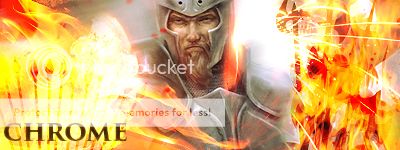

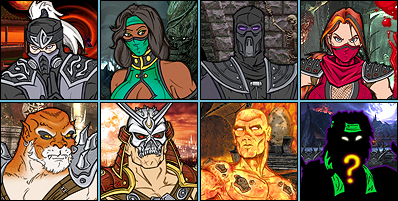
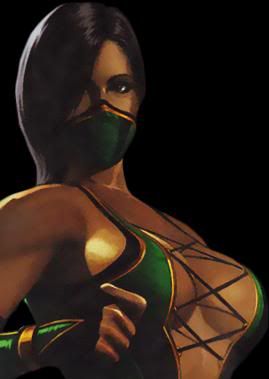
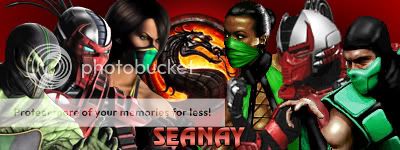




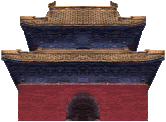


 Ed Boon and John Tobias. THE creators of MK
Ed Boon and John Tobias. THE creators of MK



